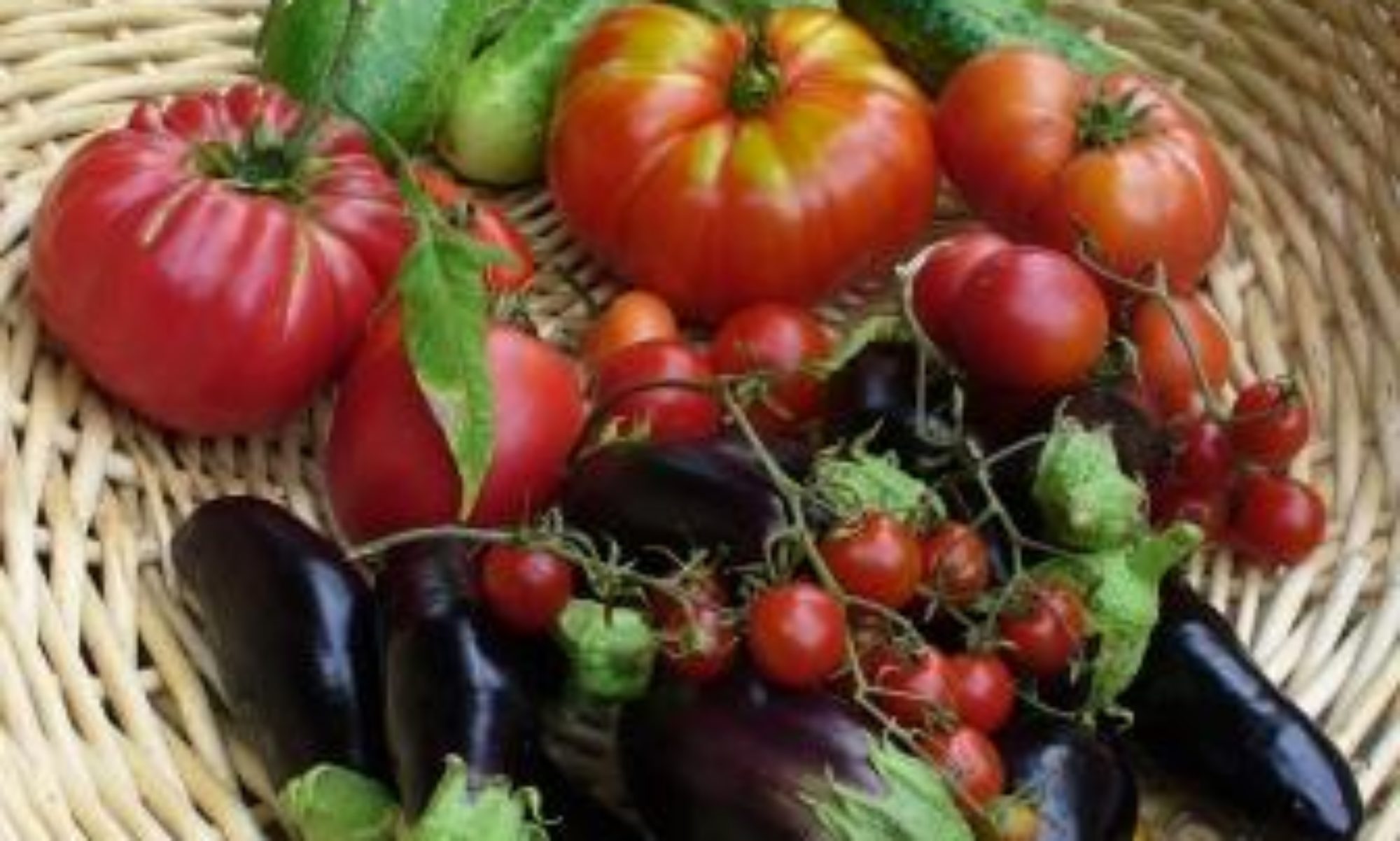Despite the cruddy weather, a decent crop of tomatoes is finally coming. Here is a classic sauce tomato – costuoluto genovese.
New Farm Machinery
OK, not entirely new. Here is the ~1925 Minneapolis Moline horse-drawn manure spreader that I purchased recently. After a little face-lift (rust removal, painting, pumping grease into a gazzilion lube nipples) it works like the day it was born. Until I get a couple of our horses trained to pull, I will be running this behind my Kubota.
What does celery like?
Growing good celery is difficult. I paid close attention to achieving top-notch soil fertility in the main area where I transplanted celery, this year. Celery loves water, and as this year provided about the wettest May and June in recorded history, I expected the celery to be excellent. It was not. Most of the plants were small and tough and they bolted early. To my surprise, the only celery plants that really thrived were planted in a portion of the garden that received so much rotted horse manure that the organics level was of the charts. Most plants in this part of the garden (for example Swiss chard) did really poorly, but the celery loved it. I am guessing it is my heavy clay soil that discourages the celery. Apparently incorporating otherwise excessive levels of organic matter improves the soil drainage sufficiently to suit celery.
Summer lives – so do I
You may wonder whether I am still alive, since I have not posted recently. In fact, I am still kicking, and here is an update. The April snowfall was only a taste of things to come. The months of May and June were consistently colder and wetter than normal – setting records in fact. Gardeners all around the Puget Sound reported that their corn and bean seeds rotted in the ground, and that was certainly my experience. A late seeding of beans finally took hold, but the crop will certainly be late this year. Pretty much everything in my garden will be late this year. Onions were a complete disaster. The roots pretty much all rotted off. Garlic did just a little better. About half the garlic plants survived well enough to produce bulbs.
I set out my 68 heirloom tomato varieties, under plastic cloches, in mid-May, and removed the plastic in late June. Despite the lousy weather, I still was able to supply my local feed store/garden center with a large number of healthy tomato starts. Sales was down about 20% from last year, probably because of the crappy weather. Still, $730 worth of plants were sold, from which I netted $365. Weather in July was unusually sunny, but the nights were unusually cool. The result is that I have HUGE tomato plants, with very few fruit set. Even plants that I maintained in the greenhouse set fruit later than last year. Last year, I had my first ripe tomatoes in the greenhouse by July 4. This, year, the first ripe greenhouse tomato appeared on July 26. For the plants growing outside, it appears that the fruit set is about 10 days later than last year. The first greenhouse varieties to ripen included Anna Russian, Costolutto Genovese, Sausage and Mule Team. First Pick is not far behind.
$1>$1>
April Snow
Potting tomato starts
Brrrr
Monday the overnight low was 24 degrees – 15 degees colder than Sunday’s weather report predicted, and the ground was frozen solid by morning. Hell, I can predict the weather more accurately than that. I was sure that all the baby veg I set out in the garden Saturday and Sunday would be goners, but this morning the temperatures warmed, and son-of-a-gun, all the plants survived in good shape. I guess the plants were smart enough to jack up the levels of their sugar/antifreeze.
The tomatoes in the greenhouse, snuggled under a remay blanket and warmed by a little 100W heater, did just fine. In fact, this morning, a few of the varieties are sprouting their first true leaves. That means that I will be transpanting them all into individual 4″ pots quite soon. Speaking of which, a big shipment of 4″ pots should arrive today via UPS from Nursery Pot Liquidators. I have never done business with these folks before, so I am holding my breath, but so far they seem to be incredibly professional. They are so politically correct it takes my breath away. They employ at-risk youths to recycle, package and sell used plastic nursery pots. How very Oregonian.
Update – The pots arrived March 11. They are excellent – heavy duty and in good condition.
Time to sow – eggplants and peppers
Planted these varieties –
Eggplants
Long Purple
Apple Green
Twilight hybrid
Thai
Peppers
Cayenne
Bell King
King of the North (early bell)
Sweet Banana
Italian Frying
Jimmy Nardello (Italian frying)
Maroni Rossi (Italian frying)
Sweet Marconi ((Italian frying)
Paprika
Jalapeno
Guadillo
Pasilla
Bull Nose
Tennessee Cheese
Inside the cloche
Yesterday was almost like summer – sunny and 65 degrees, but today is chilly and snow is predicted for Wednesday! Hopefully they are wrong.
Today I checked and hoed the vegetables that I sowed under my plastic hoop cloche. Everything has sprouted, and is looking good. Radishes, lettuce, brocolli raab, cabbage, and spinach are all up. The germination of my beet seed was pretty patchy.
Over the last week I have been transplanting starts from the green house into the garden, and I am continuing today. Anything that has sprouted its first true leaves is a candidate to be transplanted. This early date should be save for anything in the cabbage and mustard families, but it is a little chancy for lettuce – a hard frost might do them in, so I am setting out only a few lettuce plants, and transplanting the other lettuce seedlings into 3.5” pots in the greenhouse. Plants set out in the garden include cabbage, chinese cabbage, parsley (flat leaf), brocolli, cauliflower.
Baby parsley.
Boarder Collie








